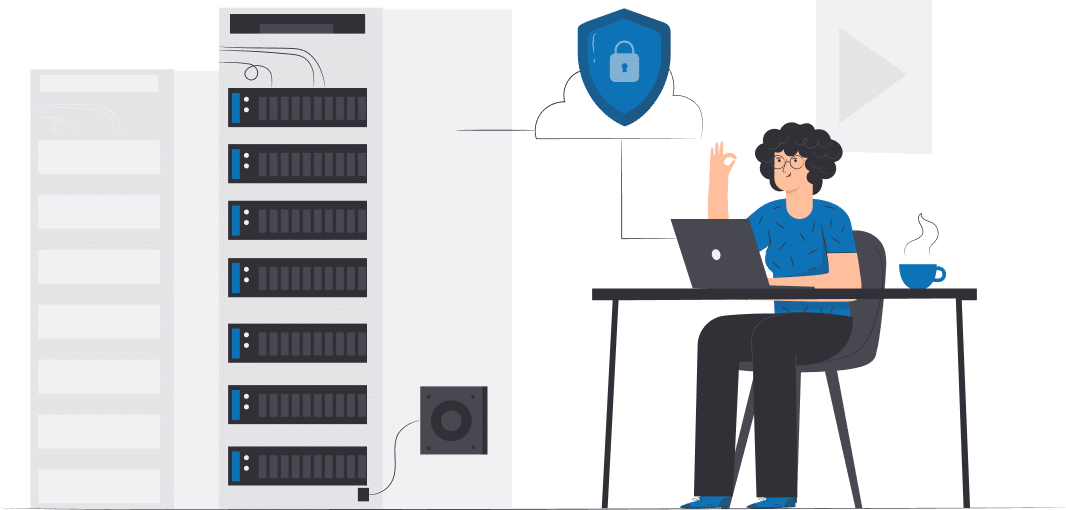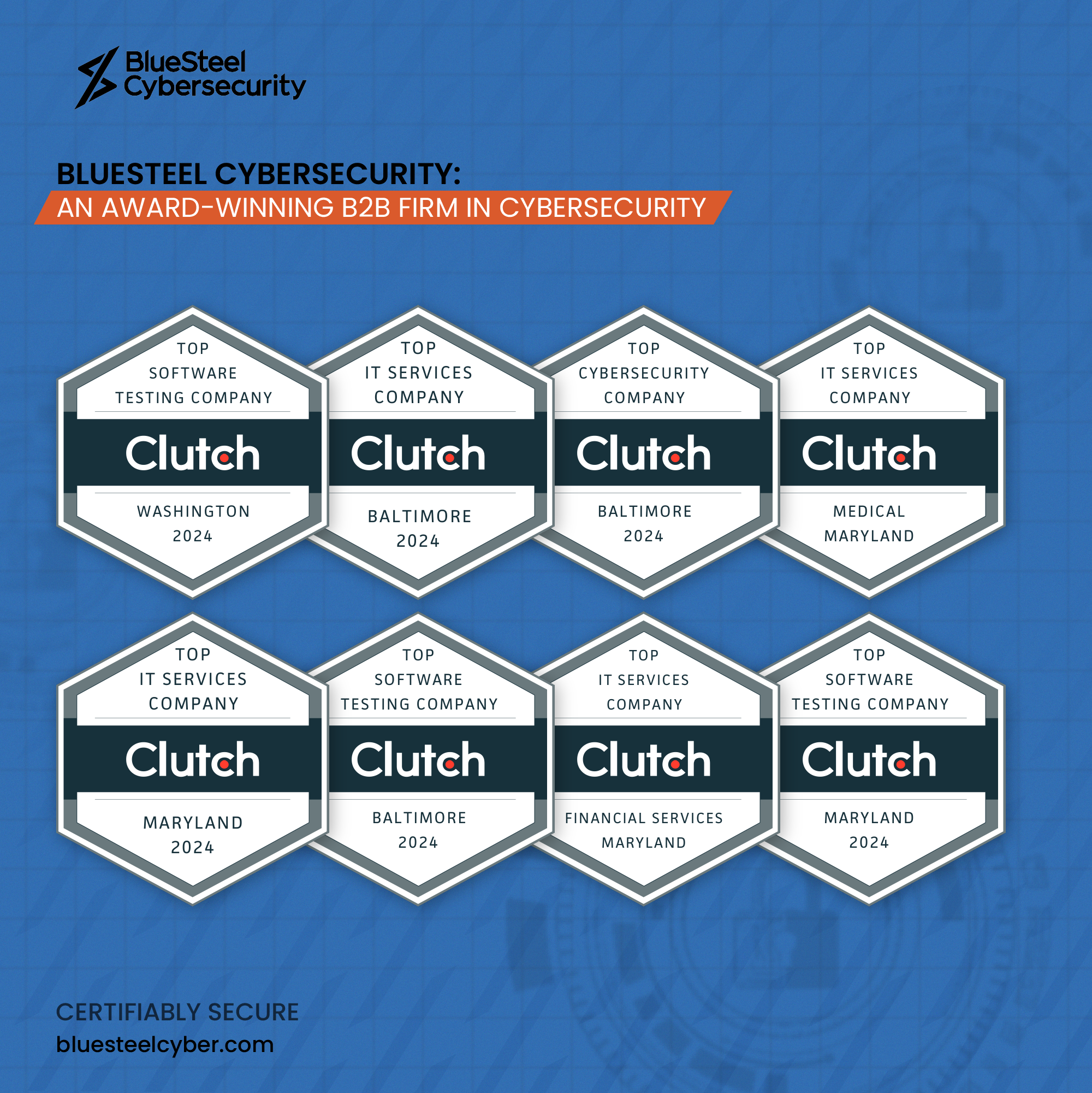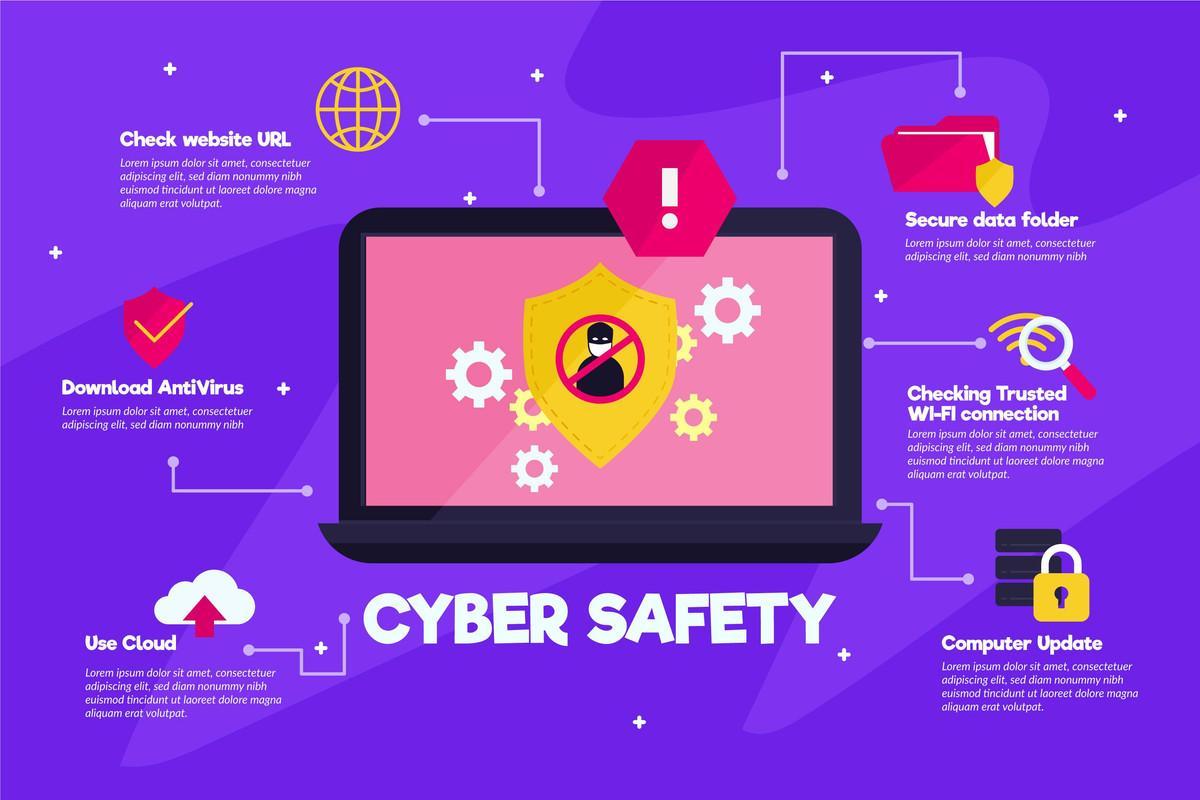The Cyber Threats in the healthcare industry is highly scrutinized and both healthcare providers and other healthcare stakeholders go through a rigorous process to ensure they meet the requirements.
These requirements and obligations are set by law and general healthcare policies. Despite these measures, the healthcare industry is still facing cyber crimes at an alarming rate in this Internet of Things era.
In response to the rise in attacks, in 2013, the FDA (Food and Drug Administration) in the United States began releasing guidelines on how the industry could secure themselves and medical devices from cyber crimes.
These crimes, however, have not entirely stopped, and healthcare institutions need to be aware of how to mitigate them. In this post, we discuss some common cyber crimes and threats and how to properly and swiftly respond to them.
Definition of Cyber Threats in the Healthcare Industry
Also known as electronic information security, it is the practice of securing mobile devices, organization servers, electronic systems, and computers from digital malicious attacks. Within a healthcare organization, cybersecurity should be of the utmost importance as it aims to secure medical devices, secure patient information, help with overall patient safety and organizational security.
Increased Cybersecurity Threats in the Healthcare Industry
In May 2021, the Health Service Executive of Ireland went through a traumatizing ransomware cyberattack. Due to this huge attack, numerous hospital appointments in Ireland were canceled, many radiology systems were down, and EHRs were inaccessible.
This attack is just one example of the huge cyber attacks on many healthcare organizations.
Here are some of the reasons why attacks often happen to the healthcare sector:
Cyber attack actors tend to target the healthcare sector because health institutions collect and are in charge of storing a plethora of sensitive personal identity information. Some of this crucial information can include things like Social Security Numbers (SSNs), credit card details, patient names, addresses, and dates of birth or death.
This information, combined with demographic data, gives the malicious parties enough information to perform attacks. In addition, full information on someone’s health also serves an underground market value.
Another reason for these crimes is the use of outdated devices that require connections. Healthcare practitioners heavily rely on connecting devices to the internet to monitor patients’ health progress and these devices also often serve practitioners when diagnosing a patient.
Unfortunately, when these devices are outdated, every connected outdated device becomes a good entry point for cybercrime.
Another reason behind why the healthcare industry gets many cyber attacks is the high reliance on healthcare technology, especially when working remotely. Unfortunately, connecting from a remote device is highly risky, and many devices are also not safe as they give cybercriminals a very easy entry point into the healthcare system.
Having and using many outdated devices and systems which have not been fitted with the most recent cyber security programs and protocols allows for a very easy access point into the healthcare system and its data.
Identifying Cybersecurity Threats in the Healthcare Industry
To protect and defend the healthcare sector against cyber attacks, one must first understand the main types of cyber threats. Knowing about the different types of threats allows the institution to be prepared with what measures to take when dealing with cyber attacks.
Common Types of Healthcare Cyberattacks
Data Breaches
Healthcare Data breaches occur when data is leaked outside of the organization that it belongs to. These leaks can be the result of outside malicious parties breaking in and gaining access to sensitive information, or can also be the result of an inside party leaking information. A breach from inside can be either intentional, where someone within the healthcare organization has purposely leaked private data, or accidental where the data was not meant to be shared. In all cases, the healthcare facility is fully responsible for securing their patient’s information.
A data breach in a healthcare facility means that the facility has failed to implement the necessary security measures in order to protect patient data. In severe cases, these facilities may also suffer financial losses due to data breaches. A cyberattack can also damage a facility’s reputation.
Oftentimes healthcare facilities open their services to data breaches because they have missed crucial cyber security updates, have neglected important additional security protocols, or neglected adding new cybersecurity measures.
Phishing
Phishing attacks in healthcare facilities are growing increasingly common. Phishing involves the attacker’s emails or websites tricking people into sharing sensitive information, such as credit card information and login details.
One example of how phishing attackers may trick healthcare practitioners is by using emails which contain the name of the healthcare facility the practitioner works for and suggesting that the facility requests the recipient to input specific sensitive information.
These attacks may lead to information theft, which is against HIPAA compliance and could result in a lawsuit against the facility that was stolen from.
Many medical practitioners are not privy to the new types of phishing threats and suspicious emails, and cybercriminals often take advantage of this gap to target these individuals.
Insider Threats
Practitioners with authorized access to data can also be considered threats and accidental threats occur in cases where these practitioners accidentally misuse their access, neglect to adhere to important security protocols, or unknowingly click on phishing emails or links.
To drive this point home, c
One hypothetical example of an accidental threat due to an accessed employee is Jeff. Jeff is an insider at a pharmaceutical company, currently conducting research and preparing to sit in on a research panel with other colleagues. Jeff wants to send his research to the rest of the panel, but is being blocked from sending any sensitive documents outside of his company. To circumvent this issue, Jeff uses a file-sharing program to send out his research documents to the panel, and he believes this information will be shared privately only to the other panel members. What he does not know, however, is that this file sharing program is geared towards public information and a week later his research documents are available for the general public to view. In this case, Jeff is now considered an insider threat.
Medjacking
Health facilities use network-based medical devices such as insulin delivery systems and pacemakers. Unfortunately, hacking and disrupting the normal functioning of these devices is a very real threat in healthcare facilities.
An attack like this may have negative results, such as a patient’s inability to receive medication or receiving excess medication.
Ransomware and Malware Attacks
Malware attacks are the most common type of cyber security attack. Ransomware and malware attacks are common within the healthcare field because health facilities store a large amount of sensitive data.
Ransomware is a type of malware where cyber criminals will encrypt files containing important information and then ask for a ransom in order to restore the facility’s access to the encrypted information.
Therefore, ransomware can heavily disrupt the delivery of healthcare services as well as compromise patient and facility data, overall leading to a greater financial loss for the facility or health care organization.
A good example of a ransomware attack is the 2016 cyber attack on the Hollywood Presbyterian Medical Center. The ransomware attackers encrypted all the facility’s computer systems using malware. They then demanded 40 bitcoins (which was the equivalent of $17,000 at the time) in exchange for the decryption key.
The ransom was paid in the end due to the critical nature of the information being held hostage. This incident further showcases how costly a breach can be, to an organization of any size, and that more issues may arise if the facility does not have enough resources to pay for the ransomware or deal with the effects afterward.
DDOs Attacks
DDoS stands for distributed denial of service, where an attack on a healthcare facility disrupts its normal functioning. The attackers do this by overwhelming the facility’s network or system with traffic from many false sources.
This kind of attack can prevent the practitioners who genuinely have to use the network or system from being able to access critical patients’ health records, make necessary appointments, and access insurance information, resulting in delayed or missed treatments among other negative effects.
What is the aim of these attacks? The main goal is to access the personal information of patients and their health records which can later be sold on the black market.
Cloud Healthcare Cybersecurity Threats
Health facilities can use cloud computing to enhance their data storage, improve communication, and streamline collaboration. Cloud computing, however, does have its own risks, especially considering that some types of cloud-based solutions do not comply with all of the HIPAA compliance regulations.
Cloud threats can also have adverse effects on regular medical records and patients’ information.
Responding to Cyber Threats in the Healthcare Industry
Learning about the common cyber attacks is one thing, but actually having to deal with the repercussions is not only a time-consuming process, but also a money-consuming process. Therefore, the best action to take is to have preventive health industry cybersecurity practices that will help the healthcare sector avoid cyber attacks.
Creating an Awareness Culture among Employees
Some of the cyber attacks, such as phishing, may be due to the staff’s lack of knowledge. For example, an uninformed healthcare facility staff member clicks on a link in an email and exposes the facility to phishing attacks.
The best thing to do to prevent a situation like this from occurring is to educate the staff on how to identify suspicious emails and links. The staff should also be educated on all of the other possible cyber attacks that may affect the healthcare facility and what to do in case one should occur.
Protecting Healthcare Organizations from Cybersecurity Threats
Some of these preventive measures are listed below;
1. Conduct Regular Risk Assessments
Conducting regular risk assessments is not only crucial for healthcare organizations, but is also an essential step for any organization. Regular assessments will ensure that the cybersecurity healthcare organization is in check.
Organizations should assess any possible risk concerning cyber attacks as well as the level of the possible cyber attack risk.
The facility’s cybersecurity program should also assess the likelihood of a risk and how bad the consequences would be if a cyber attack were to occur. Regular assessments are crucial to ensuring that the security of the facility is in check and in this case, regular can mean one or two assessments annually.
2. Using Data Encryption
All of the facility’s files should be encrypted; these files may include a patient’s data, status, and payment information, and any other important files. Asymmetric encryption would be the best way of encryption since healthcare information is highly sensitive.
3. Implementing Policies
Laying out policies that inform healthcare practitioners of the data and systems they are authorized to share or access helps to ensure that nothing restricted is shared and everyone has access to the correct information. These policies should also include how the personnel should use the facility’s devices, such as the computers.
In addition, these policies should also include the consequences that personnel will face if they attempt unauthorized access. The establishment and implementation of cyber security policies help facilities allow practitioners to keep the facility safe from cyber attacks.
4. Managing Access
Healthcare facilities should be aware of who has access to their networks and other systems. They should also know the level of access authorized personnel have to the facility’s systems.
The organization should have unique accounts for every employee and should use these accounts to monitor activities. Having unique accounts will allow the organization to have the ability to either give access or prevent unauthorized access.
The upkeep of password hygiene is also paramount to the security of an organization, which includes ensuring that the passwords used by authorized persons are unique and difficult to guess. Passwords should also not be shared or stored anywhere public or somewhere others without clearance may have access to.
Preparing for a Cybersecurity Incident
Creating an Incident Response Plan
Incident response is defined as the methods a healthcare facility uses to respond to possible cyber attacks. An organization should establish an incident response plan that showcases how they would deal with an attack.
Establishing a comprehensive plan helps the organization identify any security gaps and allows them to update and enhance any current plan that is already in place.
Email is a very crucial component in the healthcare sector as many healthcare organizations use email to send information, such as patient data, payment information, and other crucial data.
Organizations should be vigilant enough to ensure that their emailing processes are safe from cyber-attacks. One step in this process is ensuring that their email provider has security features such as spam message filtering which notifies users of spam messages.
Another important email feature is the virus scanning feature, which alerts a user if an email contains suspicious links.
Antivirus is one of the security measures an organization can take to enhance its security. Due to the rise in software available, however, it has become increasingly likely that an organization may encounter a low-quality software that may help keep organizations safe from cyber attacks.
To find a worthy antivirus software, organizations should be vigilant and conduct thorough research on their choice of software as investing in a high-quality software will help secure organizations from cyber attacks.
Responding to a Cyberattack
What can you do when your organization is already under a cyber attack? Here are some steps you can take to minimize the damage;
Isolating and Investigating the Attack
It might be a tough moment when the attack happens, but a facility should act quickly and first isolate the type of attack and investigate it thoroughly. Investigating helps the security personnel to better identify the type of attack and how to have it.
Executing the Incident Response Plan
An organization should then go back to its already established incident response plan. The organization should have a clear layout of how they can handle the attack.
Recovering from a Cyberattack
After the attack, the life of the facility and its operations should do their best to move on from the attack. Here are some steps in recovering from a cyberattack;
Updating Systems and Detecting Vulnerabilities
If the attack was successful, it only meant that there was an entry point into the systems. A facility should, in this case, update its systems and look for any vulnerabilities to prevent possible future attacks.
Enhancing Cybersecurity Measures
Security measures should be taken to secure organization emails. Email is a very crucial component in the healthcare sector as many healthcare organizations use email to send critical information. These emails often contain patient data, payment information, and other crucial data.
Organizations should be vigilant enough to ensure that their emailing processes are safe from cyber-attacks. They should also ensure that their email provider has security features such as spam message filtering which notifies users of spam messages.
Another important email feature is the virus scanning feature, which alerts a user if it detects an email containing suspicious links.
Antivirus is another security measure an organization can take to enhance its security, although to find antivirus software suitable for your organization, it is important to be vigilant and conduct thorough research on the choice of software. Invest in high-quality software that will help ensure organizations avoid cyber attacks.
Get Professional Assistance
Cyber attacks on healthcare organizations can be very adverse. Also, responding to them when they have already happened means financial losses and wasting a lot of valuable time.
The cyber security team may be all a facility needs to prevent these attacks. However, as the attackers keep advancing in their strategies, organizations need to upgrade to better ways to handle the attacks and prevent their possibilities.
BlueSteel Cybersecurity offers healthcare cybersecurity services that protect organizations from current and future cyber attacks. They also help organizations secure compliance certification, which will help organizations pass cybersecurity in healthcare laws.
We talked about regular risk assessments in healthcare organizations as a way of preventing cyber attacks. BlueSteel Cybersecurity offers security assessment services and other important health industry cybersecurity practices to organizations.
They provide insights into the current security posture. They also get insights into the gaps that exist in the cybersecurity framework of a facility. The company has a proven track record of success.
Facilities can contact BlueSteel CyberSecurity Healthcare at 301-531-4254 to book an appointment and get a quote.
Final Takeaway
A healthcare facility’s information is so critical that organizations need to be extra vigilant about the security of their systems. From the lack of information on cyber threats to the high use of connected devices, many facilities face healthcare cybersecurity challenges.
Knowing the most common cyber attacks is one step towards finding a good solution to prevent these attacks. Fortunately, there are several measures that an organization can implement to prevent cyber attacks in healthcare organizations.
However, some of these cybersecurity defenses might become outdated in the near future. For this reason, organizations need professionals like BlueSteel cyber security to enhance cyber security in hospitals.
Frequently Asked Questions (FAQs) about Healthcare Cybersecurity
Cyber threats in healthcare refer to malicious attacks targeting mobile devices, servers, electronic systems, and computers within healthcare organizations. These threats are significant as they aim to compromise patient information, disrupt healthcare services, and pose risks to patient safety and organizational security.
Common types of cyber threats in healthcare include data breaches, phishing attacks, insider threats, medjacking (hacking medical devices), ransomware and malware attacks, DDoS attacks, and cloud healthcare cybersecurity threats.
Healthcare organizations can protect themselves from cyber threats by implementing preventive measures such as conducting regular risk assessments, encrypting data, implementing security policies, managing access to networks and systems, creating an incident response plan, and enhancing cybersecurity measures.
An incident response plan is a structured approach that healthcare organizations use to respond to cyber attacks swiftly and effectively. It helps identify security gaps, outlines steps for isolating and investigating attacks, and guides the recovery process. Having an incident response plan is crucial for minimizing damage and restoring normal operations after a cyber attack.
In the event of a cyber attack, healthcare organizations should isolate and investigate the attack, execute their incident response plan, and focus on recovering from the attack by updating systems, detecting vulnerabilities, and enhancing cybersecurity measures. Seeking professional assistance from cybersecurity experts like BlueSteel Cybersecurity can also be beneficial in preventing and responding to cyber attacks effectively.
Healthcare organizations can improve employee awareness of cyber threats by providing training on identifying suspicious emails and links, educating staff about different types of cyber attacks, and establishing clear policies for data sharing and system usage. Creating a culture of cybersecurity awareness among employees is essential for preventing cyber threats.
BlueSteel Cybersecurity offers healthcare cybersecurity services aimed at protecting organizations from cyber attacks and ensuring compliance with cybersecurity regulations. Their services include security assessments, compliance certification assistance, and cybersecurity consulting tailored to the specific needs of healthcare organizations.
Regular risk assessments help healthcare organizations identify potential cybersecurity risks, assess the likelihood and impact of cyber attacks, and evaluate the effectiveness of existing security measures. Conducting regular risk assessments allows organizations to proactively address vulnerabilities and strengthen their cybersecurity posture.
Healthcare organizations can secure their email communications from cyber threats by using email providers with security features such as spam message filtering and virus scanning. Implementing strong password hygiene, using encryption for sensitive data, and investing in high-quality antivirus software are also essential for enhancing email security.
Cybersecurity in healthcare is a continuous process because cyber threats evolve rapidly, and new vulnerabilities emerge regularly. Healthcare organizations must remain vigilant, adapt to emerging threats, and continuously update their security measures to protect sensitive patient information and maintain the integrity of their systems and networks.







